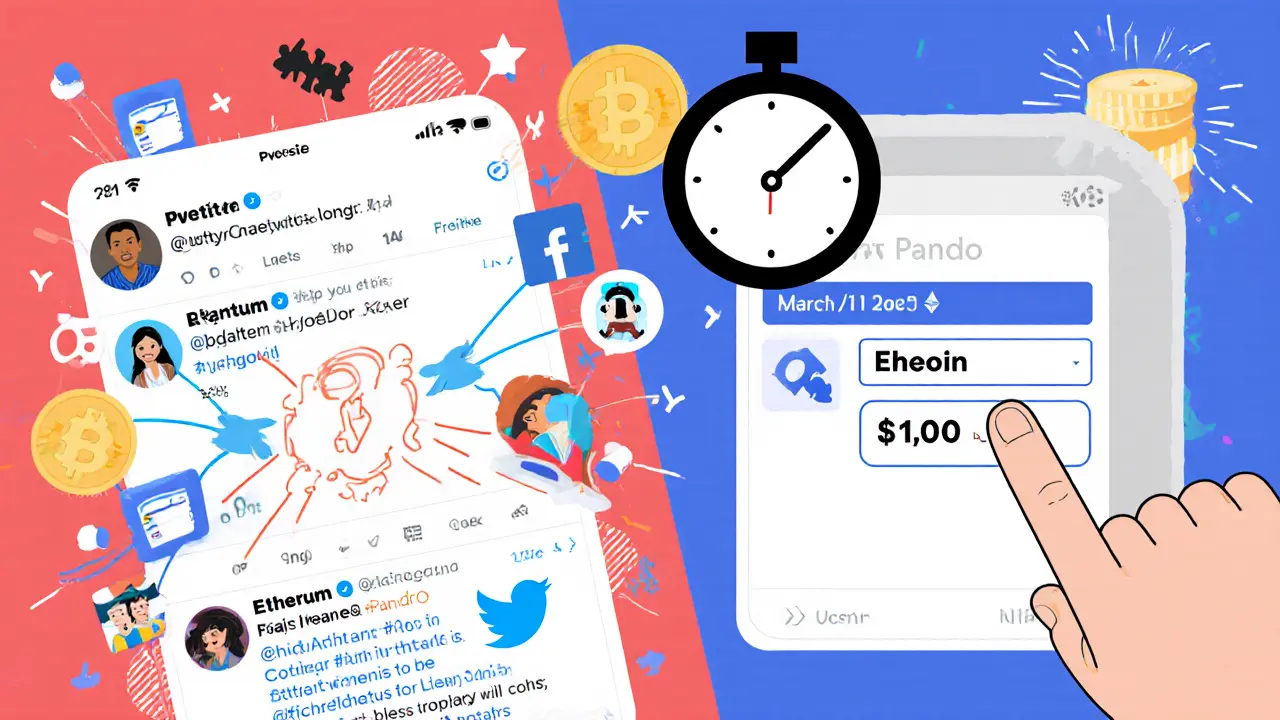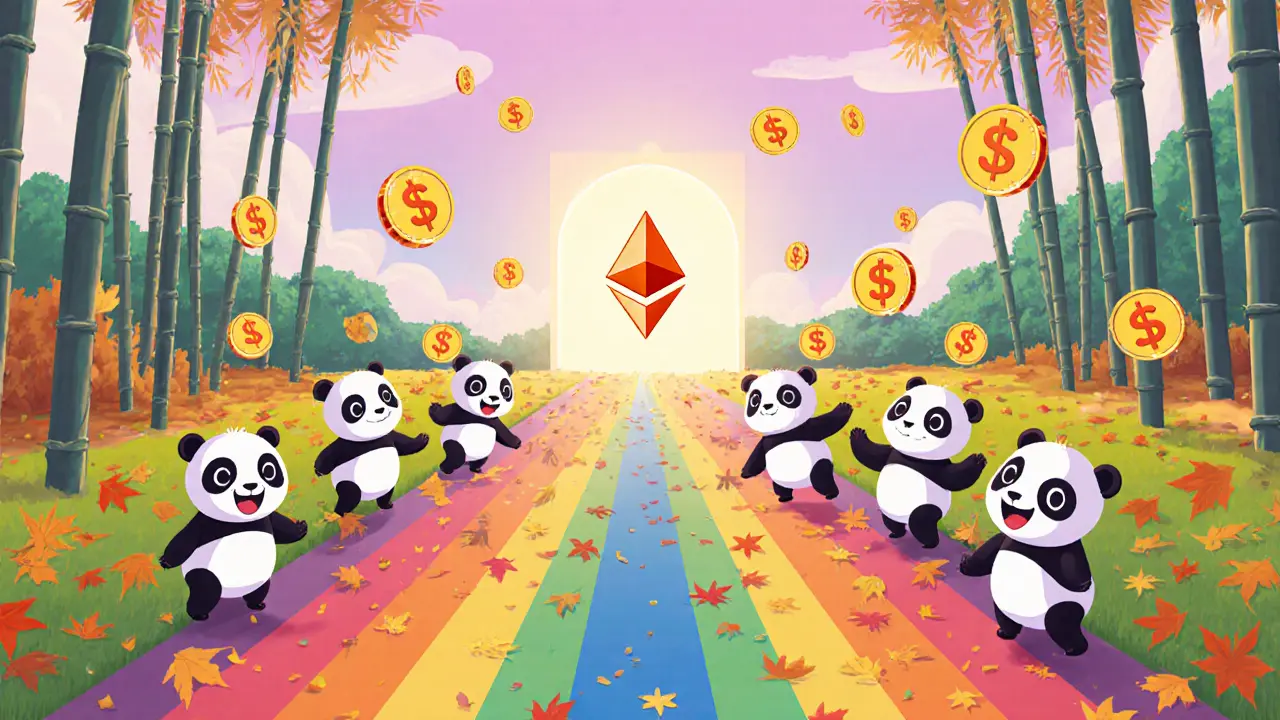PandoLand Airdrop Probability Calculator
Calculate Your Winning Odds
Based on the PandoLand ($PANDO) airdrop data from March 2025
On March 4, 2025, the PandoLand ($PANDO) airdrop began - a short, sharp burst of free crypto distributed to just 500 people. By March 10, it was over. No extensions. No delays. No second chances. If you didn’t join in those six days, you missed it. And unlike most airdrops that drag on for months, this one was over before most people even heard about it.
What Was the PandoLand Airdrop?
PandoLand wasn’t just another crypto project. It was a Play-to-Earn (P2E) game built on Ethereum, where players explored a virtual panda world, collected NFTs, and earned $PANDO tokens just by playing. The airdrop was the launchpad - a way to get early users, build a community, and seed the game’s economy. The total supply of $PANDO was 1 billion tokens. Of those, only 500,000 went out in the airdrop. That’s 0.05% of the whole supply - tiny, but carefully planned.The total value? $500,000 USD. Split evenly between 500 winners. That meant each person got exactly $1,000 worth of $PANDO tokens. No tiered rewards. No luck-based draws. Just a clean, simple math problem: 500 winners × $1,000 = $500,000 distributed.
How Did You Qualify?
You didn’t need to buy anything. You didn’t need to stake crypto or hold NFTs. All you needed was a Twitter account and five minutes a day.The rules were straightforward:
- Follow the official @PandoLandOfficial Twitter account
- Retweet the main airdrop announcement post
- Like and comment on at least three other PandoLand tweets during the event window
- Join their Discord server and verify your Twitter handle
That’s it. No complex wallet setups. No testnet transactions. No KYC. The project wanted to make it easy - so easy that even someone who’d never touched crypto could join. But here’s the catch: only 500 people would win. The system used a random draw from all qualified participants. Over 12,000 people entered. That’s a 4% chance of winning.
Many people thought it was too easy. And that’s exactly why it worked. The simplicity attracted speculators - people who didn’t care about pandas or games, just free tokens. But it also brought in real players. The ones who stayed after the airdrop ended.

Why This Airdrop Was Different
In March 2025, most airdrops were messy. Some required you to complete 15 tasks across five platforms. Others locked your tokens for a year. PandoLand didn’t do that. It was fast. It was clear. It was over in a week.Compare it to Arena Two ($ATWO), which ran a 13-month tournament-style airdrop on BNB Chain. Or Play AI Network, which had users grinding "Aura points" for months, waiting for a token launch that didn’t happen until October 2025. PandoLand gave you a shot, then moved on.
It also didn’t rely on NFTs to qualify. Many projects in 2025 required you to own a specific NFT to get in. PandoLand didn’t. That kept the barrier low. But it also meant the winners weren’t necessarily loyal users. A lot of them sold their tokens the second they could.
What Happened After the Airdrop?
The tokens were distributed on March 11, 2025. Winners got an email with a link to claim their $PANDO tokens. All they had to do was connect their Ethereum wallet - MetaMask, Trust Wallet, anything that supported ERC-20. No gas fees. No delays. The claim process took under 90 seconds.But here’s where things got interesting.
Within 72 hours, 68% of the airdropped tokens were moved out of the winners’ wallets. About half of those went straight to centralized exchanges like Binance and Coinbase. The rest were traded on decentralized exchanges like Uniswap. The price of $PANDO dropped 32% in the first week after launch.
That’s not unusual. Most gaming airdrops crash after the initial hype. But PandoLand had something most didn’t: a working game.
By April 2025, over 2,300 players were actively using the PandoLand app. Not just holding tokens - playing. Completing quests. Trading panda NFTs. Staking tokens to unlock rare skins. The game wasn’t perfect. Graphics were simple. Controls were clunky. But it worked. And that’s more than most P2E projects can say.
By June, the daily active users had doubled. The community started creating fan art. Some players even built YouTube walkthroughs. The project team quietly added new biomes, a breeding system for panda NFTs, and a marketplace where you could sell your virtual bamboo groves. It wasn’t a blockbuster. But it was alive.

Was It Worth It?
For the 500 winners? Yes - if they held even a little. Those who kept 10% of their $PANDO tokens saw their value increase by 18% by August 2025, thanks to the game’s slow but steady growth. Those who cashed out early? They made $1,000 with almost no effort. Not bad.For the project? It was a success. They got 500 real users. They got a working economy. They got feedback. And they avoided the trap of over-hyping a token with no product.
For everyone else? It was a lesson. Most airdrops are just marketing. PandoLand was a test. It didn’t promise moonshots. It didn’t say "get rich." It just said: "Here’s a game. Play it. Earn something. See if you like it."
What’s Next for PandoLand?
As of October 2025, PandoLand is still running. The team hasn’t announced a new airdrop. They’re focused on the game: adding new panda types, introducing player-vs-player battles, and integrating with other Ethereum-based games. They’re not chasing hype. They’re building.The broader crypto world has moved on. New airdrops like 0G’s NFT-based snapshot system have taken over headlines. But PandoLand? It’s still there. Quiet. Alive. Playing.
If you’re looking for the next big airdrop, don’t chase the biggest reward. Look for the project that’s still around after the tokens drop. That’s the one worth watching.
Was the PandoLand airdrop real or a scam?
The PandoLand airdrop was real. It was conducted on Twitter with clear rules, a verifiable winner list, and on-chain token distribution. All 500 winners received their $PANDO tokens, and the transaction history is publicly visible on Ethereum block explorers. The project also launched a functional Play-to-Earn game after the airdrop, which continues to operate as of October 2025. There’s no evidence of fraud or rug pull.
Can I still claim PandoLand ($PANDO) tokens from the airdrop?
No. The airdrop window closed on March 10, 2025, and the claiming period ended on March 17, 2025. Any website or social media post claiming you can still claim $PANDO tokens is a scam. The only legitimate way to get $PANDO now is to buy it on a supported decentralized exchange like Uniswap, but it’s no longer free.
Do I need to own an NFT to play PandoLand?
No. You can play PandoLand for free. The game lets you start with a basic panda avatar and earn NFTs through gameplay. You don’t need to buy anything upfront. But if you want rare pandas or special land parcels, you’ll need to trade or stake $PANDO tokens. The game is designed so you can earn your way in.
Why did so many people sell their $PANDO tokens right after the airdrop?
Because most participants weren’t interested in the game - they were just chasing free crypto. The airdrop’s low barrier to entry attracted speculators who saw $1,000 in free tokens and cashed out immediately. This is common in crypto airdrops. The real test is whether the project keeps users engaged after the free money runs out. PandoLand passed that test better than most.
Is PandoLand still active in 2025?
Yes. As of October 2025, PandoLand is still running. The game has over 4,500 registered players, with 1,200+ active weekly. The team has added new features like panda breeding, PvP battles, and a player-run marketplace. They’ve stopped chasing airdrops and are focused on making the game fun and sustainable. That’s rare in the P2E space.
How does PandoLand compare to other Play-to-Earn games?
PandoLand is smaller than giants like Axie Infinity, but it’s more accessible. Unlike Axie, you don’t need to buy NFTs to start. Unlike newer projects like Arena Two, it doesn’t require grinding for months. PandoLand’s strength is its simplicity and focus on immediate gameplay. It’s not the most advanced, but it’s one of the few P2E games from 2025 that didn’t die after the airdrop.
